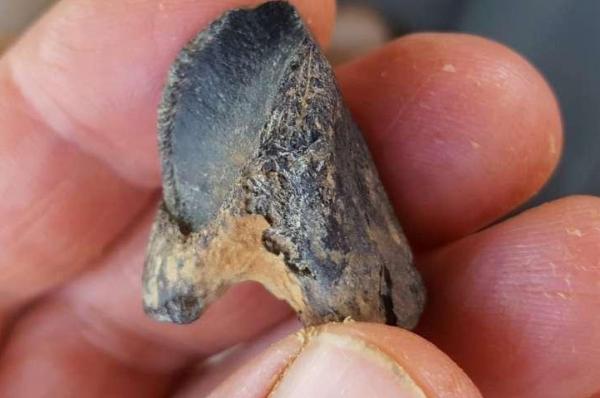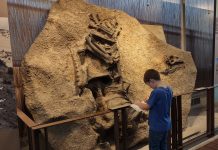
May 23 (UPI) — Paleontologists have discovered a rare dinosaur tooth in Mississippi, proof that horned dinosaurs roamed eastern North America some 66 million years ago.
Most North American dinosaur fossils are found in the West, among the Rockies, where geologic activity has exposed ancient strata.
“I was excited because I knew it was a dinosaur tooth, and dinosaur fossils are rare discoveries east of the Mississippi River,” George Phillips, paleontology curator at the Mississippi Department of Wildlife, Fisheries, and Parks’ Museum of Natural Science, said in a news release.
The tooth’s split root, a unique feature, helped scientists identify the fossil as belonging to a horned specimen.
“We only have the one fossil, but it’s more than enough to show that an animal very similar to Triceratops — perhaps even Triceratops itself — made it into eastern North America,” said Andrew Farke, a paleontologist at the Raymond M. Alf Museum of Paleontology at the Webb Schools in Claremont, Calif.
Remains of horned dinosaur species have been discovered in western North America. During the Late Late Cretaceous, between 95 and 66 million years ago, a seaway connecting the Arctic Ocean and the Gulf of Mexico bisected the continent, preventing east-west migration.
Until now, scientists weren’t sure when the seaway finally disappeared, but the latest find — detailed in the journal PeerJ — suggests dinosaurs from the West were once again populating the eastern half of North America.
“The discovery is shocking because fossils of ceratopsid horned dinosaurs had never been discovered previously from eastern North America,” Phillips said. “It’s certainly the most unique and important vertebrate fossil discovery I’ve ever made.”





